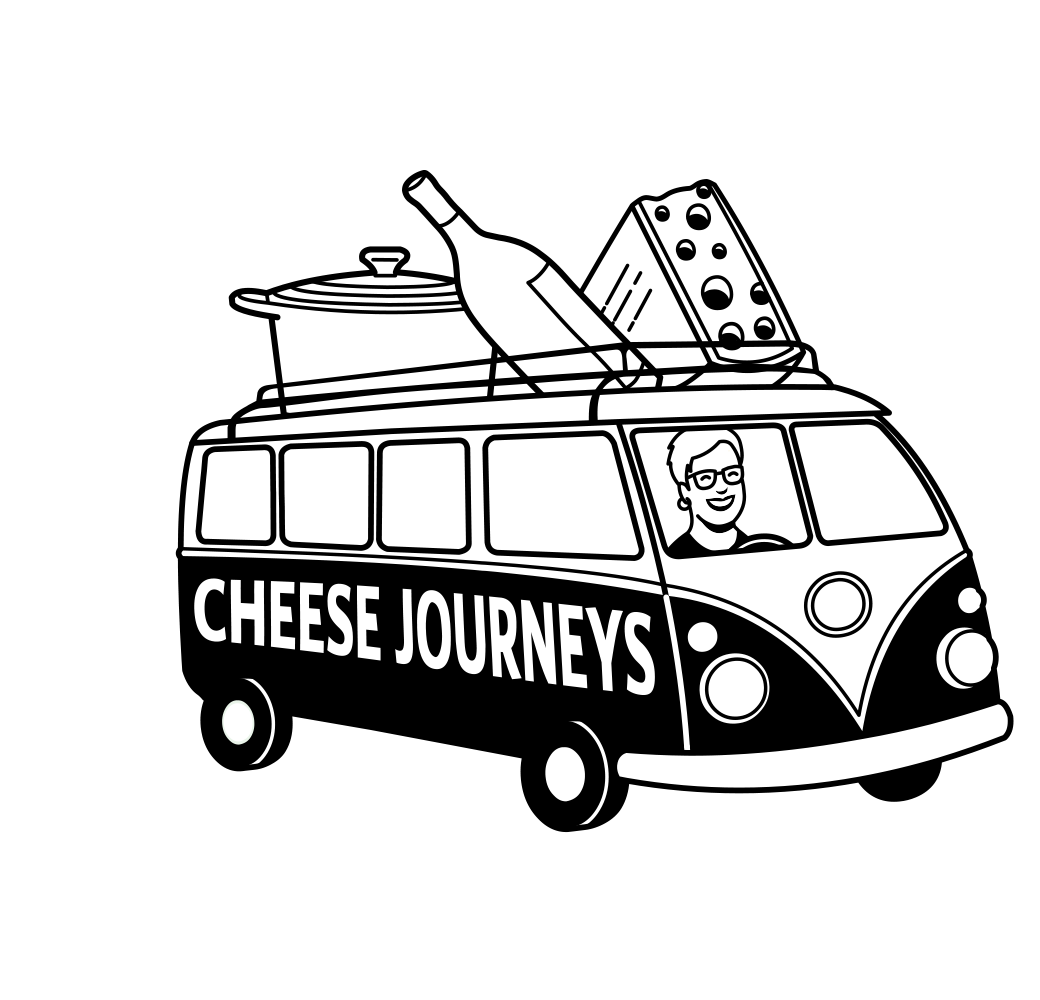Discovering Beppino Occelli and his ‘Dessert Cheeses’
It was another one of those serendipitous connections made on a family trip that led me to Beppino Occelli and his ‘dessert cheeses’. About six years ago, a couple of years before launching Cheese Journeys, we were all feeling the stress of NYC life and dreaming of a vacation in some out-of-the-way part of Italy—where we could set camp for a couple of weeks and indulge in our passion for good food, sightseeing, and local culture.
I had heard about the Ligurian Alps in the northwest, bordering France: Some travel pundits were calling it the next Tuscany. My husband John searched rental properties and eventually settled on one in Garessio, in southernmost Piedmont, close to Liguria. It looked ideal: John was thrilled at the prospect of hiking in the mountains nearby; the fairytale landscape of Barolo country an hour away, beckoned our daughters; and in two-three hours, I could be in Portofino or Nice. The Italian and French Rivieras were that close.
To my surprise, my American and Italian friends were perplexed. “Garessio? Where’s that?” they asked. “Why are you going there?” Without wanting to divulge much about my newly found dream vacation spot, I shot back with a travelogue blurb: “It’s off the beaten track, a lovely little town in the middle of nowhere but convenient to everywhere. It has friendly, hospitable inhabitants and a surprisingly rich history and culture going back to Roman times.” After that, they chose to take a wait-and-see attitude.
Inside the Occeli caves in Valcasotto. Photo courtesy Beppino Occeli.
Our landlord (and soon-to-be friend), Giulia, turned out to be an Italian-American architect and preservationist who had restored lovely old properties in many parts of the world. She had renovated several medieval buildings in Garessio and, to boost the village economy, had arranged for locals to offer her guests cooking classes, wine tastings, and even spa services.
When I mentioned my interest in cheese to Giulia, she answered casually, “Oh, we have a cheesemaker just up the road. I could arrange a visit if you like.” Of course! The Juhl family never declines an offer of a cave tour and tasting.
Little did we know that the local cheesemaker was Beppino Occelli, world-famous for his butter, but more recently as one of Italy’s greatest entrepreneurs of artisan cheese. Occelli revived the ancient alpine cheesemaking traditions in the mountains around Valcasotto, 12 miles up from Garessio. He restored the old village and rejuvenated its restaurant, Locanda del Mulino (‘Inn at the Mill’), named after the old water-driven flour mill he also brought back to life.
Always on the lookout for new recipes and skills, the girls and I made room in our relaxed schedule for a cooking class. Our instructor was a talented local chef named Alessandra. We quickly learned that making gnocchi is not as easy as it looks.
Over the years, we’ve gone back to Garessio as a family several times, and, when the pace of life gets too intense, we have a phrase we use around our house: “I need to Garessio.”
In 2016, I returned to Valcasotto on a scouting trip with Dave Gibbons. Occelli himself hosted our cave tour and tasting, followed by a three-hour luncheon, courtesy of Chef Alessandra, who runs the restaurant and does a masterful job of incorporating Occelli products into her menus. As we pondered how to fit a full visit into our busy Northern Italy itinerary, we enjoyed the local stone-ground polenta with melted cheese on top, some ravioli stuffed with crutin— a cow’s milk cheese laced with shavings of summer black truffle, and some rustic hand-cut maltagliati pasta, with a sauce of Occelli butter, and more crutin. There was a tasting plate for dessert, which included eight of the 25-plus cheeses on Occelli’s roster. Among them are regional classics such as Robiola and Castelmagno as well as several local gems, including tumas (tommes) and a Valcasotto.
Occelli’s cheeses are a great example of the Italian penchant for elaboration—that is, creating multiple variations from one basic recipe, with an eye toward outstanding flavor and presentation. The base cheese for his Gran Riserva line is called Cusié, which stands for “cosa che c’e” (what there is) in the local dialect. Traditionally, after making their smallish Robiolas, local artisans would use the leftover milk—not just cows but also sheep and goats—to make larger wheels of cheese meant for longer aging.
The Gran Riservas are aged up to 18 months and include versions covered in barley malt and whiskey, Barolo, chestnut leaves, and maggengo—spring’s first-mown hay from Valcasotto’s high pastures And, finally, there’s the show-stopper, which is topped with concentric circles of grappa-soaked fruit. That’s the one I dubbed, “the ultimate dessert cheese.” It looks like a painstakingly crafted fruit tart and delivers strong yet balanced flavors with a background of sweetness.
Chatting with Beppino’s international marketing director, Andrea, about how they might sell more of these cheeses in the US, I suggested marketing them to specialty shops as unique and highly prized “dessert cheeses”. I was also thinking “cheese as art”, so I connected Occelli & Co. with artist Mike Geno. If you have a hard time finding these gems in the US, you might catch a glimpse of them in Mike’s paintings or consider joining us on a trip to Garessio and Valcasotto to experience them first-hand.
